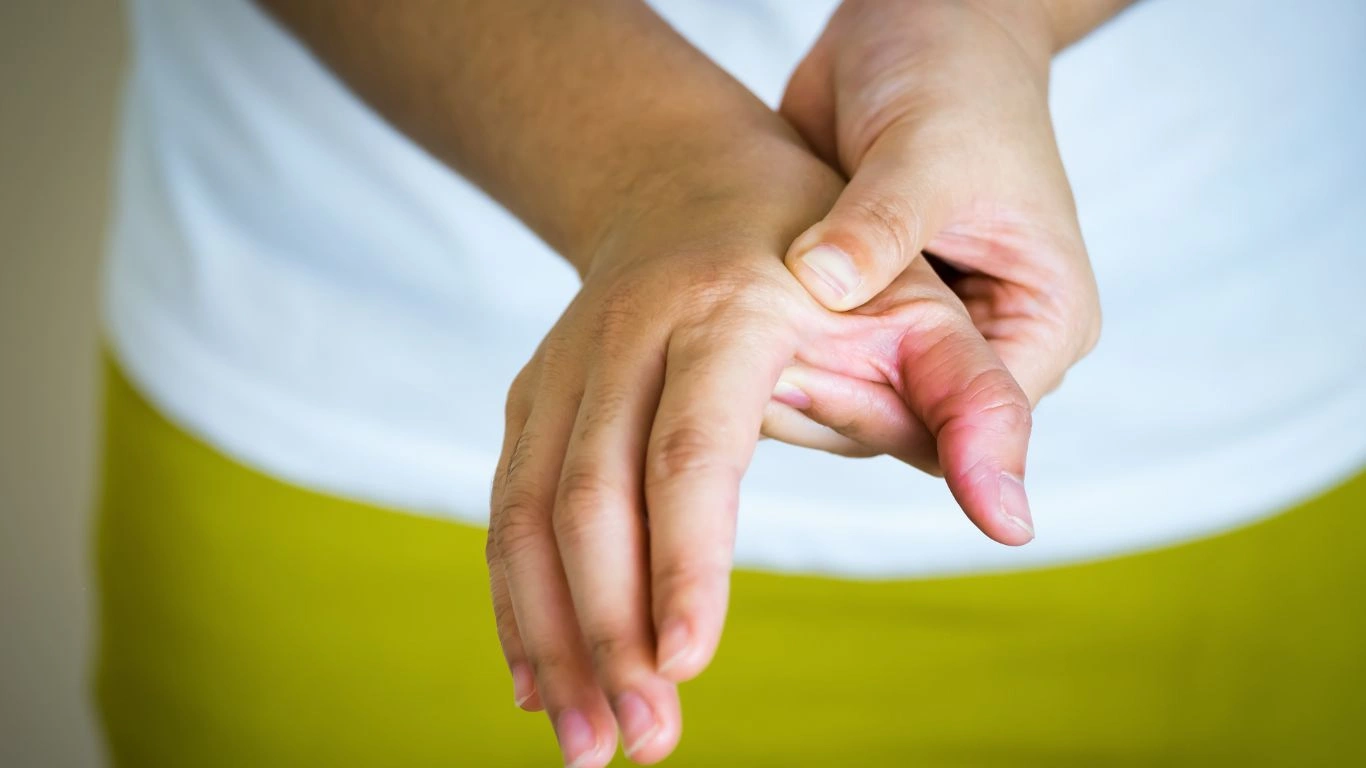Best Exercises for Rheumatoid Arthritis Joints: A Comprehensive Guide
Living with rheumatoid arthritis (RA) can feel overwhelming at times, especially when it comes to staying active. But don’t worry—there are plenty of exercises that can help reduce pain, improve joint mobility, and boost your overall quality of life. In this guide, we’ll explore some of the best exercises for people with RA, so you can keep moving and feel better.

Why Exercise is Important for RA
First off, exercise is incredibly important for managing RA. It helps by:
- Improving joint function: Regular movement keeps your joints from becoming stiff and maintains their range of motion.
- Relieving pain: Exercise helps release endorphins (your body’s natural painkillers), which can reduce the pain you feel.
- Strengthening muscles: Stronger muscles around your joints help support them better, reducing strain and improving stability.
- Boosting mood: Exercise is a natural mood booster, and it can help fight fatigue, which is common with RA.
So, even on days when RA feels like it’s winning, getting in some gentle movement can make a huge difference.
Best Exercises for Rheumatoid Arthritis Joints
Now that we know why exercise is key, let’s break down some of the best exercises for RA. The goal here is to keep things low-impact, joint-friendly, and easy on your body while still offering great benefits.
1. Range of Motion (ROM) Exercises
These exercises focus on gently moving your joints through their full range of motion. They’re fantastic for maintaining flexibility and reducing stiffness.
Examples:
- Neck Rolls: Slowly roll your neck in circles, first clockwise and then counterclockwise. This helps loosen up the neck muscles and keeps them flexible.
- Shoulder Rolls: Lift your shoulders up towards your ears, roll them back, and then drop them down. This can help ease tension in the shoulders.
- Ankle Circles: Sit or lie down, and slowly rotate your ankles in circles in both directions. This helps keep the ankle joint mobile.

2. Strengthening Exercises
Building muscle strength is important for joint stability, especially when living with RA. Strengthening exercises target the muscles around the joints, reducing pressure and supporting better movement.
Examples:
- Wall Push-Ups: Stand facing a wall, place your hands on the wall at shoulder height, and slowly bend your elbows to lower your body towards the wall. Push yourself back up. This works the upper body without stressing the wrists.
- Seated Leg Lifts: Sit in a sturdy chair and extend one leg at a time, holding it up for a few seconds before slowly lowering it. This strengthens the quadriceps without putting too much stress on the knees.
- Resistance Band Exercises: Light resistance bands can be used to strengthen various muscles, like biceps, triceps, and legs. These are perfect for RA because they allow for controlled, low-impact movements.
3. Aerobic Exercises
Aerobic or cardiovascular exercises help keep your heart healthy and can improve your overall stamina. Plus, they aid in weight management, which is essential for reducing stress on your joints.
Examples:
- Walking: Walking is one of the best aerobic exercises for people with RA. It’s gentle, low-impact, and can be done anywhere. Try walking on a soft surface like grass or a track to minimize stress on the joints.
- Swimming: Swimming or water aerobics is amazing because the buoyancy of the water reduces pressure on the joints while still allowing for full-body exercise. Plus, it’s super gentle and low-impact.
- Cycling: Riding a stationary bike or a regular bike is another great choice for RA patients. It’s easy on the knees and hips and helps improve endurance and cardiovascular health.

Aim for 20-30 minutes of aerobic exercise at least 3 times a week.
Conclusion
Exercise is a powerful tool for managing rheumatoid arthritis, but it’s important to choose exercises that are joint-friendly and appropriate for your body’s needs. Whether it’s range-of-motion exercises, strengthening workouts, or water-based activities, there are plenty of ways to stay active without causing strain. Remember, always check with your healthcare provider before starting a new exercise routine to make sure it’s right for you.
Appendices
FAQs
- Can I do high-impact exercises with rheumatoid arthritis? It’s generally best to avoid high-impact exercises like running or jumping, as they can put extra stress on your joints. Stick with low-impact options instead.
- How often should I exercise if I have RA? Aim for at least 20-30 minutes of exercise 3-5 times a week. This can include a mix of aerobic exercises, strength training, and stretching.
- Can yoga help with rheumatoid arthritis? Yes! Yoga is a great way to improve flexibility, reduce stress, and manage pain associated with RA. Look for classes tailored to people with arthritis.
- Is swimming a good exercise for people with rheumatoid arthritis? Absolutely! Swimming is gentle on the joints because the water supports your body weight. It’s excellent for improving strength, flexibility, and endurance.
- What if I experience pain during exercise? Mild discomfort can be normal, but if you experience sharp or severe pain, stop immediately. Consult with your doctor to make sure you’re doing exercises that are safe for your specific condition.
References
- National Institute of Arthritis and Musculoskeletal and Skin Diseases (NIAMS). (2023). Exercise and Rheumatoid Arthritis. Read Article
- American College of Rheumatology. (2024). Exercise Recommendations for People with RA. Read Article
- Mayo Clinic. (2024). Rheumatoid Arthritis and Exercise: The Best Activities. Read Article
Disclaimer
The information provided in this article is for general informational purposes only and is not intended as medical advice. Always consult with a healthcare provider or rheumatologist before starting any new exercise regimen, especially if you have rheumatoid arthritis or any other medical condition.

Tarra Nugroho is a dedicated Nurse Practitioner with a strong foundation in family and preventive care. She brings both compassion and clinical expertise to her practice, focusing on patient-centered care and health education. As a contributor to Healthusias.com, Tarra translates medical knowledge into clear, empowering articles on topics like women’s health, chronic disease management, and lifestyle medicine. Her mission is simple: help people feel seen, heard, and informed—both in the clinic and through the content she creates. When she’s not caring for patients, Tarra enjoys weekend hikes, plant-based cooking, and curling up with a good health podcast.






